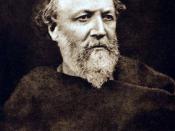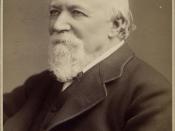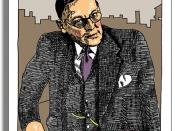The Dramatic Monologue is a type of a lyric poem. It was developed in the Victorian period. Robert Browning is said to have perfected the Dramatic Monologue, with poems such as ÃÂMy Last DuchessÃÂ, and ÃÂSoliloquy of a Spanish CloisterÃÂ.
As itÃÂs name states, it is a monologue, hence it is a speech uttered by a single person. In its fullest form, the dramatic monologue has three salient features ÃÂFirstly, a single person who is patently not the poet, utters the speech that makes up the whole of a poem, in a specific situation at a critical moment. The dramatic monologue must occur at a critical moment, as it is this feature that distinguishes the dramatic monologue from a monologue. It also gives a dramatic effect, as it gives the reader the feeling that the something has happened before which has led to the utterance of the dramatic monologue.
For instance, in the poem, ÃÂThe Forsaken MermanÃÂ by Matthew Arnold, the MermanÃÂs human wife has abandoned him and their children in order to go pray in a church. The Merman utters the poem at the time when he realizes that that his wife will never come back.
Secondly, this person addresses and interacts with one or more other people, but we know of the auditorÃÂs presence only from clues in the discourse of the single speaker. The auditor never speaks, but we know of what he or she says and does when the speaker tells us. For instance, in the poem ÃÂThe Love Song of J. Alfred PrufrockÃÂ by T.S. Eliot, the implied auditor is PrufrockÃÂs lover. We know of her presence when Prufrock addresses her, for example ÃÂLet us go then, you and IÃÂ. This first line of the poem tells us then that the poem...


